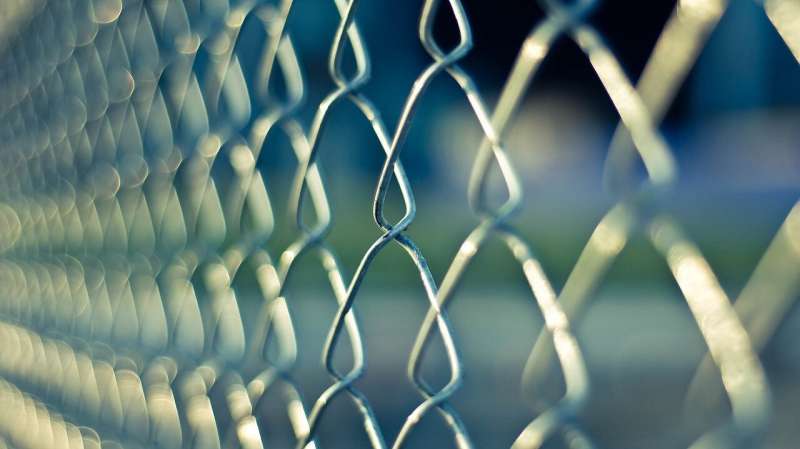System failures contribute to self-harm amongst imprisoned women who have been in care

Women in prison who have experienced the care system as children report using self-harm as a way to communicate, alleviate and end the pain in their lives, new research, led by Lancaster University, finds.
Self-harm incidents in custody in England and Wales have recently reached a record high, increasing particularly in women’s prisons. This research, funded by the Nuffield Foundation, highlights the prevalence of self-harm among women with prior experience of care who were interviewed in English prisons.
Using prior care experience as the underlying thread enabled the research team to explore the topic ‘through a different lens’ to gain a deeper understanding of women’s lives and highlight how they may have been failed across different systems, sometimes with devastating consequences.
Findings from the research are published today in Criminology & Criminal Justice, the journal of the British Society of Criminology, in an article written by the researchers at Lancaster University, Liverpool John Moores University, and the University of Bristol.
The research calls for urgent action to address system failures affecting those who have previously been in care.
Ministry of Justice data (2020) reveal that self-harm incidents in custody in England and Wales reached a record high of 63,328 incidents in the 12 months to December 2019, up 14% on the previous year.
These figures highlight a rate of 3,130 self-harm incidents per 1,000 prisoners in women’s establishments, compared with 650 incidents per 1,000 prisoners in men’s establishments.
Despite long-standing interest in the links between self-harm and being in care, and between self-harm and experiences of imprisonment, little is known about the interconnections between all three.
Researchers carried out interviews with women, all of whom had been in care as children, across three closed women’s prisons in England.
Most women described backgrounds of abuse, serious violence and trauma, and had multiple experiences of victimization throughout their lives.
Of the 37 women interviewed, 17 raised self-harm and/or suicide as an issue: 14 reported self-harming and/or attempting suicide, and six women mentioned being ‘suicidal’, but it was unclear if they had attempted to take their own life.
Lead Author Dr Claire Fitzpatrick, a Senior Lecturer in Criminology at Lancaster University Law School, said: “We did not set out to explore the issue of self-harm, but it was an issue that many women chose to share. This evidence is deeply concerning and highlights the need for urgent action.”
Some women reported self-harming as a way of communicating distress.
For Marlene [not her real name] (38), self-harm became the method of communicating to prison officers that she was struggling and in need of support.
“I’ll start crying and then I’ll self-harm and then I’ll explain,” she said. “But I don’t know how to say, ‘look I’m feeling really low, I’m struggling, I need help’, like verbally. I do that through actions.”
Not feeling listened to was a common theme amongst women relevant to both care and prison experiences, which could be compounded by difficulties articulating pain.
“Self-harm may be a practical alternative to verbal communication for women who are suffering in some way – and care-experienced women with a history of being let down may be particularly reluctant to trust the latest authority figures involved in their lives,” says the journal article.
Mandy (46), who entered care aged 11 following sexual abuse by a family member, noted that after being “passed from pillar to post” in care, and sexually abused by a support worker in one children’s home, “I didn’t want to work with any authority figures at all”.
Mandy describes both her self-harm and offending as “a cry for help” and a way of communicating trauma.
A further function of self-harm highlighted by the women was to ‘alleviate pain’. An absence of timely mental health support could lead to an increase in individuals attempting to alleviate psychological pain.
Joanne (39) entered care aged 13 following domestic violence at home, and experienced six different foster care and children’s homes placements. She described her self-harm as a ‘control thing’ for when she got ‘angry or agitated’ and felt that she had more control over life in prison than she had in care.
“In the care system when you’re a kid you’ve got no choices,” she explained. “Nobody asks you what you want…you never get taught how to cope with stress, the stress you’re being put under being put in a new house or in a new group home.”
The research suggests that while self-harm might begin as a method of alleviating pain, it could become something more serious.
Five women reported attempting to take their own life on at least one occasion. Among these women there was a clear theme of wanting ‘things to end’ when pain became unbearable.
Inadequate support in care and custody was evident in many interviews, highlighting how responses to self-harm in prison may repeat experiences of movement and instability that women experienced in care.
A lack of mental health support, the absence of emotional support for the long-term impact of self-harm and the inability of the care system to provide safety were also common themes.
Mechanisms for tackling this must, say the researchers, involve listening to women without judgment, paying attention to their individual feelings and experiences, and crucially not creating further harm.
The study team call for far more investment in community-based alternatives to punishment for women who would not otherwise present a danger to others.
For those already in custody, work in prisons is ongoing to improve support for those with care experience.
Source: Read Full Article
